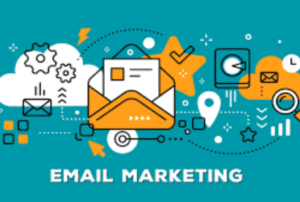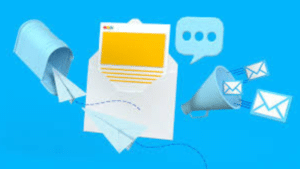In today’s fast-paced digital world, mastering email automation is no longer a luxury—it’s a necessity. If you’re looking to engage your audience, nurture leads, and drive sales without spending hours crafting each individual email, GetResponse offers a robust solution. Its powerful email automation tools help marketers and business owners streamline workflows, saving time while maximizing efficiency. This guide will walk you through everything you need to know to master email automation with GetResponse.
Introduction: Why Email Automation Matters
Email marketing has proven to be one of the most effective ways to communicate with customers. In fact, email marketing generates a return on investment (ROI) of 42:1 on average—meaning for every $1 spent, you could earn $42 in return! But manual email campaigns can be time-consuming, and let’s face it, it’s easy to lose track of sending the right message at the right time. That’s where email automation comes in.
By automating emails, you can set up strategic, timely, and personalized email flows that engage your audience while you focus on other tasks. With GetResponse, you don’t just automate emails—you optimize them for maximum impact, tailoring content to each customer’s journey.
What Is Email Automation with GetResponse?
GetResponse’s email automation tool allows you to send automated email sequences based on user behavior, demographics, or specific triggers. For example, you can set up welcome emails, post-purchase follow-ups, abandoned cart reminders, and more, ensuring you stay top-of-mind with your audience without manually sending each email.
GetResponse’s automation features include:
- Drag-and-drop workflow builder: Easily create visual email sequences.
- Pre-built templates: Save time by using ready-made automation workflows.
- Behavioral triggers: Automate emails based on user activity (e.g., site visits, email opens).
- Advanced segmentation: Personalize emails by segmenting your audience based on behavior or demographics.
Benefits of Email Automation
1. Increased Efficiency
One of the biggest benefits of email automation is that it saves you time. Rather than manually sending out individual emails, automation lets you pre-build sequences that deliver the right message at the right moment. Imagine setting up a month’s worth of emails in a single afternoon—that’s the power of automation!
2. Higher Engagement
Automated emails tend to get better open and click-through rates than regular one-off campaigns. This is because they’re sent at the perfect time when a user is most engaged (such as immediately after signing up for your newsletter). With GetResponse, you can even trigger emails based on user actions like website visits or link clicks.
3. Personalization at Scale
Gone are the days of generic, one-size-fits-all marketing. GetResponse allows you to segment your audience and deliver personalized email content based on user behavior and preferences. According to a study by Campaign Monitor, personalized emails have a 26% higher open rate than generic ones!
How to Master Email Automation with GetResponse
Step 1: Plan Your Automation Workflow
Before diving into GetResponse’s tools, take a step back and outline your goals. Are you trying to nurture leads, increase sales, or improve customer retention? Once you’ve defined your objectives, map out an email sequence that aligns with each step of your customer’s journey.
For example:
- Welcome new subscribers with a series of educational content.
- Send follow-up emails after someone purchases a product.
- Use abandoned cart emails to recover lost sales.
Step 2: Create Your First Workflow
With your plan in place, it’s time to create your automation workflow. GetResponse’s drag-and-drop workflow builder makes this process incredibly easy. You can choose from several pre-built templates or start from scratch, depending on your campaign’s complexity.
- Trigger: Decide what action or behavior starts your email sequence (e.g., signing up for your newsletter).
- Action: Determine the next steps (e.g., sending a welcome email).
- Conditions: Set specific rules for when emails should be sent (e.g., if the user clicks on a link or makes a purchase).
Step 3: Optimize for Maximum Impact
Automation is not just about sending emails; it’s about optimizing your emails for the highest level of engagement. Here are some optimization tips:
- A/B Testing: Test different subject lines, CTAs, and designs to see what works best.
- Segment Your Audience: Use GetResponse’s advanced segmentation to deliver tailored content to different customer segments.
- Analyze Performance: Regularly review your email metrics, such as open rates and click-through rates, to fine-tune your strategy.
Frequently Asked Questions
Q: What types of emails can I automate with GetResponse?
A: With GetResponse, you can automate a variety of emails, including:
- Welcome sequences
- Lead nurturing emails
- Post-purchase follow-ups
- Abandoned cart reminders
- Re-engagement campaigns
- Event invitations
Q: How do I measure the success of my automated emails?
A: GetResponse provides comprehensive email analytics that show metrics like open rates, click-through rates, and conversions. Use this data to continually optimize your email campaigns for better performance.
Q: How does GetResponse help with personalization?
A: GetResponse allows you to segment your email lists and personalize content based on user behavior, demographics, and preferences. You can even use dynamic content blocks to tailor each email for individual recipients.
Q: Can I integrate GetResponse with my CRM?
A: Yes! GetResponse integrates seamlessly with many CRM systems, allowing you to sync customer data and automate communications across platforms.
Conclusion: Take Control of Your Marketing with GetResponse
Mastering email automation is the key to staying competitive in today’s digital landscape. With GetResponse, you can easily build powerful email sequences that engage your audience, increase conversions, and nurture long-lasting customer relationships.
Ready to start automating your emails? GetResponse provides all the tools you need to create and optimize campaigns that deliver results. Don’t wait—take control of your email marketing strategy today and unlock effortless success.
Notes
- Meta description: Unlock the power of email automation with GetResponse! Learn how to create seamless workflows, boost engagement, and save time. This guide provides everything you need to master email automation today—click now for expert tips!
- 10 tags: GetResponse, email automation, marketing automation, lead nurturing, email marketing, workflows, customer engagement, automation strategy, personalized emails, conversion optimization
- 5 longtail tags: GetResponse email automation, automate email campaigns GetResponse, email marketing automation tools, improve engagement with email automation, lead nurturing email sequences
- Strategies to Consider:
- Use Powerful Visuals: Incorporate images, infographics, or GIFs to make your content more engaging and easy to understand.
- Leverage Storytelling: Use real-life examples or customer success stories to make your content relatable and inspiring.
- Create Shareable Content: Include quotes, stats, or infographics that readers will want to share on social media.
- Optimize for Mobile: Ensure your blog is easy to read on mobile devices to capture a broader audience.
- Implement Interactive Elements: Use polls, quizzes, or calculators to engage readers and encourage longer time on page.




